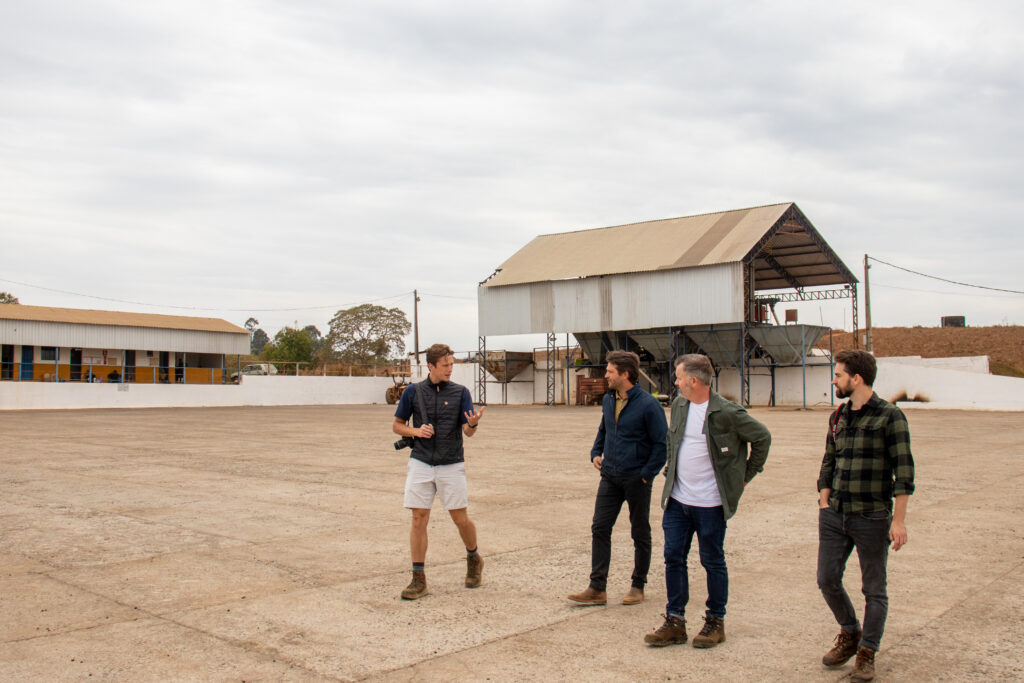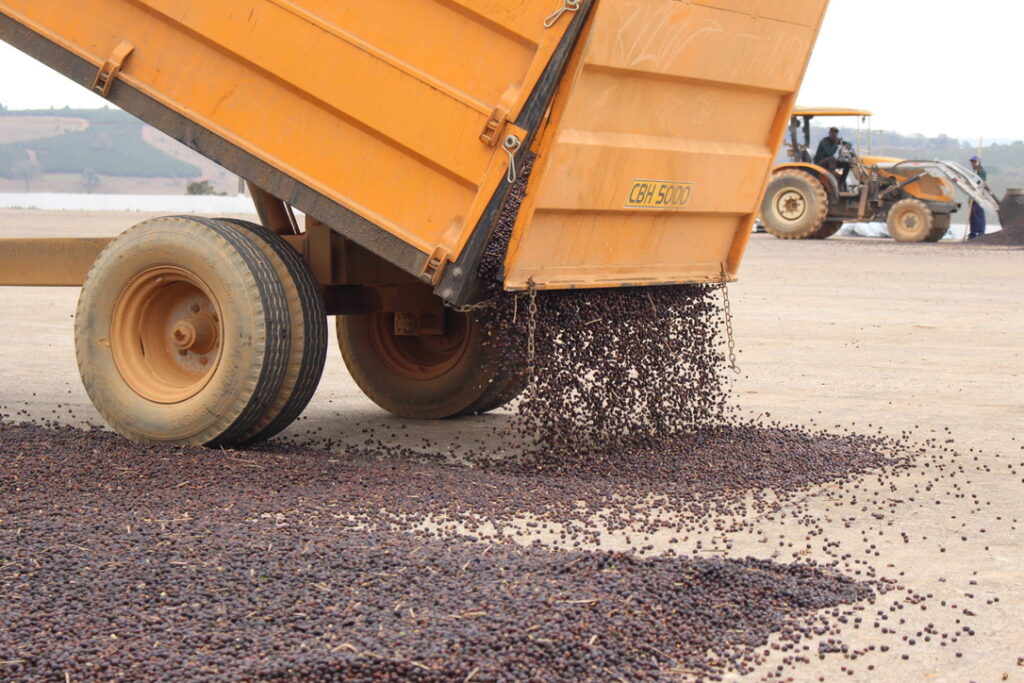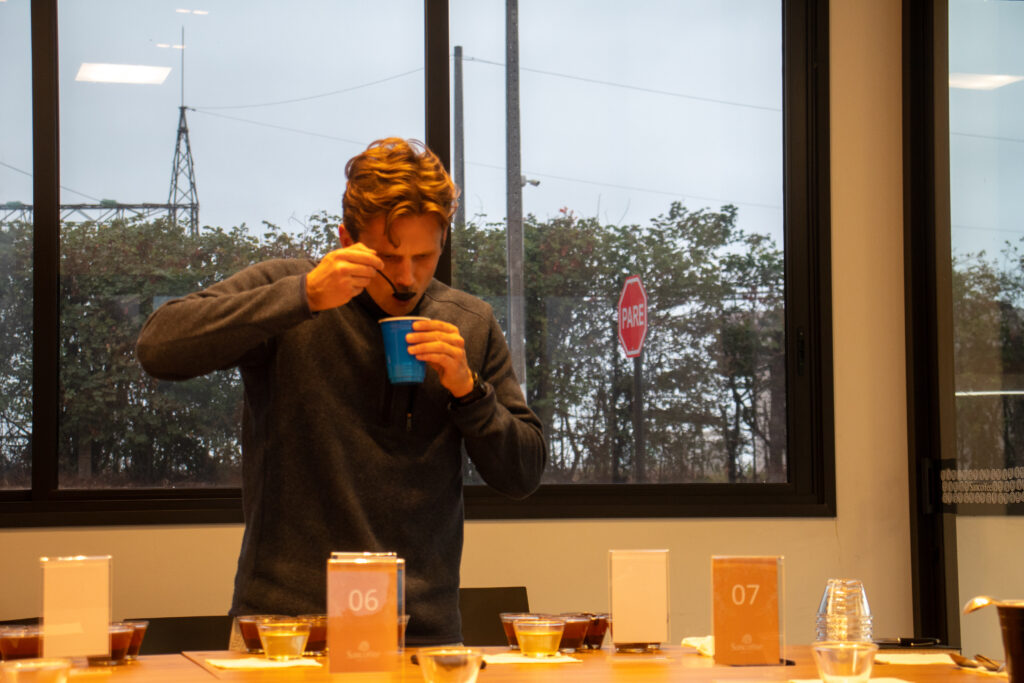Ben Palmer’s Reflective Brazil Trip
-

-
It has been just over two and half years since my last Origin trip. Having spent much of that time behind a screen in South London, you can imagine the hysteria when a road map to visit Sancoffee and Ipanema began to form! The notion of touring Brazil would send any coffee professional into a stew of excitement, but taking current market conditions into consideration, the timing of a trip to the Godfather of all Origins was particularly poignant.
I am confident in saying that the majority of those reading this article have been wrestling with the ‘new’ price of green Arabica coffee, compounded by spiralling inflation. The New York ‘C’, upon which Arabica is priced, remains sky high. Only twice in the past ten years has the market reached current levels. One of our overarching goals at Mercanta is to establish a price for specialty green Arabica coffee primarily based on quality, transcending correlations to the ‘C’ market. Despite best efforts, the base value for all coffee is dictated by said market, and we are therefore inextricably tied to it today necessitating a deeper understanding of it’s trends.
My travels through Minas Gerais provided ample opportunities to openly discuss the challenges that the Brazilian producer faces today. The purpose of this article is to encapsulate the conversations that transpired over the course of the ten days that I (Ben Palmer) spent with Sancoffee and Ipanema, summarized in three key points that I think are the key drivers of the price of Arabica today.
-

-
One cannot discuss the state of the New York ‘C’ market, nor Brazil for that matter, without mentioning the frost that occurred in July 2021. It is well documented these days, either on roaster websites or in mainstream media, so I’ll try to keep this section brief.
1994 was the last meaningful frost, two years after I was born, which may help contextualise the rarity of such an event. The most recent was unanticipated resulting in a dramatic supply shock. Overnight, the world’s largest producer of Arabica lost roughly 30% of its annual output. The scales of supply and demand see-sawed violently leaving the industry scrambling, all the while the New York ‘C’ raced to highs last witnessed in 2012. A bag of raw green coffee effectively became 25% more expensive over the course of a week. This jump is reflected almost exactly in the price of Mercanta’s SPOT price today. In 2019, Mercanta’s entry level Brazil was a seller at £5.25/kg. The first few containers currently on the water stocked with scrumptious fresh crop start at £6.95/kg …
When discussing the frost over another seductive lunch of steak, beans, and rice at Henrique Dias Cambraia’s family home, I was informed that climate change fuelled its punch. Due to global warming, the risk of cooler temperatures decreases elongating the period between frosts. Over the years, the Brazilian producer has therefore become comfortable with growing coffee at lower altitudes (sub 800m). At lower altitudes, one can take advantage of more accessible topography archetypal of valleys, enabling further mechanization and greater yields. More land to farm, more coffee, more revenue, why wouldn’t you? Well, taking you back to schoolboy geography, cool air is denser containing a higher concentration of water molecules. Should this cool dense air roll through the growing regions of Brazil and settle in a valley whilst reaching freezing point, coffee trees grown at lower altitudes will be adversely affected.
This is exactly what happened in July 2021, wreaking havoc on the 22/23 crop where better yields were predicted. When I say better yields, I am referring to what is described as an ‘on cycle’ in Brazil, a consequence of the biennial nature of the coffee tree. A combination of a frost affected 22/23 crop, and an ‘off cycle’ in 21/22 meant that the Brazilian producer effectively lost ONE whole crop. The Brazilian producer is therefore desperately trying to recoup loses realised over the course of two years! This is a key factor feeding into the price of Arabica today.
-

-
Another compounding factor is that despite coffee being available to pick, labour shortages evident throughout the UK are also very real in Brazil. The fallout from COVID, primarily the increased cost of living, has resulted in pickers searching for higher earnings elsewhere. When I enquired as to why cooperatives were struggling to recruit, I was told that many preferred to now work on unregistered farms, receiving cash payments versus a regulated salary. Although this may seem attractive in the short term, they are worse off for reasons such as job security, health care, housing, and access to education.
A more intriguing point of discussion evolved whilst on the road due to this revelation, and that was the question of how does one stimulate and engage a workforce? If farm managers and pickers feel disconnected from the product they are growing, efficiency and productivity suffers. This is a problem evident in many coffee producing countries interlinked with a general lack of interest amongst younger generations of potential coffee growers. One solution employed involves additional investment in management training, and provision of autonomy and ownership over segments of the farm. Those identified as leaders are given responsibility for a team and their training, the trees planted and their performance, and ultimately, the segments success. Integrating the people on the ground within the overarching strategy of the farm, cooperative, business, has proven to be one way of improving productivity. All the above is incredibly positive and a change for the better, but incurs additional costs, costs which are feeding into the price of Arabica today.
There’s an argument to be made stating that all of the above are variables beyond one’s control. The world’s most sort after meteorologist failed to foresee and quantify the impact of the frost. Climate change is complex and far beyond the means of the coffee community to address. And who could have predicted COVID compounded by the fallout, namely the “Great Resignation”, also known as the “Big Quit”!?
This argument is flawed on multiple levels, but regenerative solutions to, for example, the impact of climate change costs time, and money. Inevitably the New York ‘C’ will weaken, and a sub $100 cts/lbs market will make headlines once again. However, now that we have a witnessed and adjusted to recent prices, can the industry establish a benchmark that incorporates the cost of the investments required to address the aforementioned? It’s a big ask, especially as Europe is seemingly falling apart, but the specialty movement is well placed to spearhead a discourse that recognises the changes at Origin and the need to adjust in the long term for the ‘new’ price of green Arabica coffee.